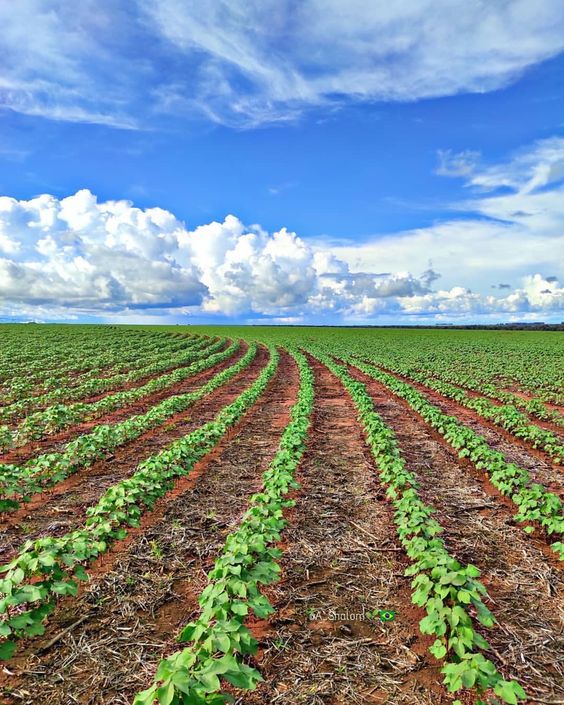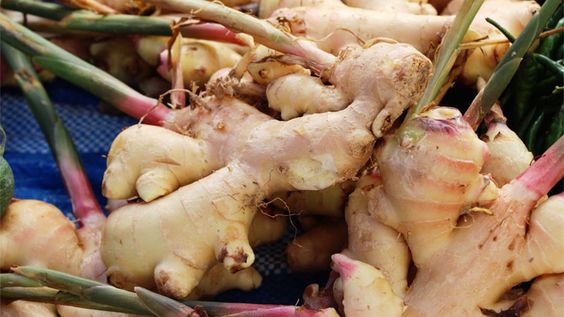Corn Yield Increase with Smart Agriculture: Revolutionizing Modern Farming Techniques
Corn Yield Increase is one of the most significant crops worldwide, serving as a cornerstone for food production, animal feed, and industrial uses such as biofuel. The increasing global population and demand for food and energy place immense pressure on corn farmers to maximize yield per acre. Traditional farming methods, although effective in the past, are increasingly insufficient in meeting these demands due to challenges such as climate variability, pest and disease outbreaks, and resource limitations.
Corn Yield Increase, typically measured in bushels per acre, is a critical indicator of agricultural productivity. High yields are essential not only for ensuring food security but also for meeting the demands of the livestock feed industry and the growing biofuel market. Corn’s versatility as a crop makes it indispensable in global agriculture. However, achieving consistently high yields is challenging due to various factors:
- Soil Fertility: Soil quality directly impacts corn yield. Depleted soils with low nutrient levels lead to stunted growth and reduced production. Regular monitoring and appropriate fertilization are crucial to maintain soil health.
- Water Management: Corn is a water-intensive crop. Inconsistent rainfall, droughts, or inefficient irrigation can lead to significant yield losses. Effective water management practices are essential to ensure optimal crop growth.
- Pest and Disease Management: Pests such as corn borers and diseases like corn smut can devastate crops if not managed properly. Traditional pest control methods often involve blanket applications of pesticides, which can be inefficient and environmentally harmful.
- Climate Variability: Corn is sensitive to temperature fluctuations, and extreme weather events can severely impact yields. Climate change has made weather patterns more unpredictable, adding another layer of complexity to corn farming.
Contents
- 1 The Role of Smart Agriculture in Increasing Corn Yield
- 2 Expanding the Benefits of Smart Agriculture in Corn Farming
- 3 Setting Clear Objectives for Implementing Smart Agriculture in Corn Farming
- 4 Detailed Explanation of Key Smart Agriculture Technologies
- 5 Usefulness of Smart Agriculture in Corn Farming
- 6 Advantages of Smart Agriculture in Corn Yield Increase
- 7 Challenges and Solutions Corn Yield Increase
The Role of Smart Agriculture in Increasing Corn Yield
Corn Yield Increase Smart Agriculture addresses the aforementioned challenges by providing precise, data-driven solutions that enhance every stage of corn cultivation. The key technologies in Smart Agriculture include:
- IoT Sensors: IoT sensors are the backbone of precision farming. These sensors, placed in the soil and on plants, collect real-time data on soil moisture, temperature, nutrient levels, and crop health. This data is transmitted to a central system, where it is analyzed to determine the optimal timing and amount of irrigation, fertilization, and pest control. For example, in regions with limited water resources, IoT sensors can ensure that water is applied only when necessary, reducing waste and promoting efficient use of this vital resource.
- Drones: Drones equipped with advanced imaging technologies, such as multispectral and hyperspectral cameras, provide detailed aerial views of cornfields. These images reveal variations in crop health that may not be visible to the naked eye. For instance, drones can detect early signs of nutrient deficiencies, pest infestations, or disease outbreaks, allowing farmers to take targeted action before these issues spread. This precision reduces the need for broad-spectrum pesticide applications, lowering costs and minimizing environmental impact.
- Data Analytics and AI: Data analytics and AI are central to transforming the vast amounts of data collected by IoT sensors and drones into actionable insights. Advanced algorithms analyze this data to predict outcomes, identify trends, and provide recommendations for optimizing crop management practices. For example, AI can analyze historical weather data and current soil conditions to recommend the best planting dates, helping farmers avoid adverse weather conditions that could harm the crop. Similarly, AI can optimize fertilization schedules based on soil nutrient levels, ensuring that crops receive the right amount of nutrients at the right time.
- Precision Machinery: Precision machinery, such as GPS-guided tractors, planters, and sprayers, ensures that farming operations are carried out with the highest accuracy. These machines are programmed to plant seeds at the optimal depth and spacing, apply fertilizers and pesticides precisely where needed, and control weeds effectively. This level of precision minimizes waste, reduces labor costs, and maximizes crop performance. For instance, by planting seeds at the exact depth required for optimal growth, farmers can ensure uniform germination and reduce the risk of crop failure.
Expanding the Benefits of Smart Agriculture in Corn Farming
Corn Yield Increase,The benefits of Smart Agriculture in corn farming are multifaceted and extend beyond just yield improvement:
- Increased Yield: Corn Yield Increase,The primary benefit of Smart Agriculture is the significant increase in corn yield. By optimizing every aspect of crop production, from planting to harvesting, Smart Agriculture ensures that corn plants receive the best possible conditions for growth. This leads to higher yields, which is crucial for meeting the growing global demand for corn.
- Resource Efficiency: Corn Yield Increase,Smart Agriculture promotes the efficient use of resources such as water, fertilizers, and pesticides. By applying these inputs precisely where and when they are needed, farmers can reduce waste and lower their overall input costs. For example, precision irrigation systems that use IoT sensors to monitor soil moisture levels can reduce water usage by up to 30%, making farming more sustainable and cost-effective.
- Enhanced Crop Quality: Corn Yield Increase,In addition to increasing yield, Smart Agriculture also improves the quality of the corn produced. By ensuring that crops receive the right nutrients at the right time, Smart Agriculture helps plants develop more uniformly, resulting in healthier, more robust crops. This can lead to higher market prices for the produce, further increasing profitability for farmers.
- Reduced Environmental Impact: Corn Yield Increase,Traditional farming methods often involve the over-application of fertilizers and pesticides, which can lead to soil degradation, water pollution, and loss of biodiversity. Smart Agriculture reduces these negative environmental impacts by promoting the precise application of inputs. For instance, by using drones to apply pesticides only where needed, farmers can reduce the amount of chemicals used, protecting the surrounding ecosystem and contributing to environmental sustainability.
- Labor Efficiency: Corn Yield Increase,The automation of various farming tasks through precision machinery and AI reduces the need for manual labor, allowing farmers to manage larger areas of land more effectively. This is particularly beneficial in regions where labor shortages are a concern. Moreover, the time saved through automation can be reinvested in other aspects of farm management, such as market research or business planning.
Setting Clear Objectives for Implementing Smart Agriculture in Corn Farming
Corn Yield Increase,The successful implementation of Smart Agriculture in corn farming requires clear objectives. These objectives guide the adoption of new technologies and ensure that the benefits are maximized:
- Maximizing Yield: Corn Yield Increase,The foremost objective is to maximize the yield per acre of corn. This involves using Smart Agriculture technologies to optimize every stage of crop production, from seed selection to harvesting. By achieving higher yields, farmers can meet market demand, increase profitability, and contribute to food security.
- Optimizing Resource Use: Corn Yield Increase,Another key objective is to optimize the use of resources such as water, fertilizers, and pesticides. Smart Agriculture technologies enable precise application of these inputs, reducing waste and lowering costs. This not only makes farming more cost-effective but also promotes environmental sustainability by minimizing the impact on natural resources.
- Enhancing Sustainability: Sustainability is a critical objective for modern agriculture. Smart Agriculture promotes sustainable farming practices that protect the environment and ensure long-term agricultural productivity. This includes reducing the use of chemical inputs, minimizing soil erosion, conserving water, and enhancing biodiversity.
- Improving Decision-Making: Corn Yield Increase Smart Agriculture provides farmers with access to real-time data and predictive analytics, enabling them to make informed decisions that enhance crop performance. For example, by analyzing weather forecasts and soil conditions, farmers can choose the optimal planting dates and fertilization schedules, reducing the risk of crop failure and improving overall yield.

Detailed Explanation of Key Smart Agriculture Technologies
Corn Yield Increase,To fully understand the impact of Smart Agriculture on corn farming, it is essential to explore the key technologies involved:
1. IoT Sensors in Corn Farming
IoT sensors are the cornerstone of precision farming, providing real-time data on various aspects of the farming environment. These sensors are deployed throughout the cornfield to monitor soil conditions, weather patterns, and crop health. The data collected by IoT sensors is transmitted to a central system, where it is analyzed to provide actionable insights.
For example, IoT sensors can measure soil moisture levels at different depths, allowing farmers to optimize irrigation schedules. By applying water only when necessary, farmers can reduce water usage and prevent waterlogging, which can lead to root diseases. Similarly, IoT sensors can monitor soil nutrient levels, enabling precise fertilization that ensures crops receive the right amount of nutrients at the right time.
In addition to soil monitoring, IoT sensors can be used to track crop growth and health. By measuring factors such as leaf temperature, humidity, and chlorophyll levels, these sensors can detect early signs of stress, such as drought or disease, allowing farmers to take corrective action before significant damage occurs.
2. Drone Technology for Crop Monitoring
Corn Yield Increase,Drones are rapidly becoming an essential tool for modern agriculture, offering a bird’s-eye view of the entire farm. Equipped with advanced imaging technologies, such as multispectral and hyperspectral cameras, drones can capture detailed images of the cornfield, revealing variations in crop health that may not be visible from the ground.
For example, multispectral cameras can capture images in different wavelengths of light, including those outside the visible spectrum. These images can be used to create vegetation indices, such as the Normalized Difference Vegetation Index (NDVI), which measures the density and health of the crop canopy. By analyzing NDVI maps, farmers can identify areas of the field that are underperforming and take targeted action to address the underlying issues.
Corn Yield Increase,Drones can also be used for precision spraying of fertilizers and pesticides. By mapping the field and identifying areas that require treatment, drones can apply inputs only where needed, reducing the overall amount of chemicals used and minimizing environmental impact. This targeted approach not only saves money but also promotes more sustainable farming practices.
3. Data Analytics and AI in Decision-Making
Corn Yield Increase,Data analytics and AI are at the heart of Smart Agriculture, transforming raw data into actionable insights that drive better decision-making. The data collected by IoT sensors, drones, and other sources is processed using advanced algorithms that identify patterns, trends, and correlations.
For example, AI can analyze historical weather data to predict future weather patterns and recommend the best planting dates for corn. By planting at the optimal time, farmers can avoid adverse weather conditions, such as frost or drought, that could negatively impact the crop. AI can also analyze soil data to recommend the most effective fertilization strategy, ensuring that crops receive the right nutrients in the right amounts.
Corn Yield Increase,In addition to optimizing crop management practices, AI can be used to develop predictive models that forecast crop yields, allowing farmers to make more informed business decisions. For example, by predicting the yield of the upcoming harvest, farmers can adjust their marketing strategies, negotiate better contracts, and secure financing.
Usefulness of Smart Agriculture in Corn Farming
Corn Yield Increase,The usefulness of Smart Agriculture in corn farming is evident in several key areas:
- Enhanced Crop Monitoring: Continuous monitoring of the cornfield using IoT sensors and drones allows for early detection of issues, such as nutrient deficiencies, pest infestations, or disease outbreaks. By identifying these problems early, farmers can take corrective action before significant damage occurs, preventing yield loss and ensuring uniform crop growth.
- Data-Driven Decisions: Corn Yield Increase,The data collected by Smart Agriculture technologies provides farmers with valuable insights that inform decision-making. For example, by analyzing soil moisture data, farmers can optimize irrigation schedules, ensuring that crops receive the right amount of water at the right time. Similarly, by analyzing weather forecasts and soil conditions, farmers can choose the optimal planting dates, reducing the risk of crop failure and improving overall yield.
- Climate Adaptation: Corn Yield Increase,Smart Agriculture provides tools and techniques that help farmers adapt to changing climate conditions. For example, AI-driven data analytics can predict weather patterns and recommend the best planting dates, helping farmers avoid adverse weather conditions that could negatively impact the crop. Additionally, precision irrigation systems can ensure that crops receive adequate water even during drought conditions, promoting resilience and ensuring consistent yields despite environmental challenges.
- Increased Profitability: Corn Yield Increase,By increasing yield, reducing input costs, and improving crop quality, Smart Agriculture helps farmers achieve higher profits. The data-driven insights provided by Smart Agriculture technologies enable farmers to optimize their business strategies, identify new market opportunities, and negotiate better contracts, further increasing profitability.
- Market Competitiveness: Corn Yield Increase,Higher yields and better-quality produce enable farmers to compete effectively in the global market. By adopting Smart Agriculture technologies, farmers can meet the growing demand for high-quality corn, securing their position in the market and increasing their competitiveness.
- Environmental Sustainability: Corn Yield Increase Smart Agriculture promotes sustainable farming practices that protect natural resources and reduce the environmental impact of agriculture. For example, by using precision irrigation systems that reduce water usage, farmers can conserve water and protect the surrounding ecosystem. Similarly, by applying fertilizers and pesticides only where needed, farmers can reduce chemical runoff and minimize soil degradation.
Advantages of Smart Agriculture in Corn Yield Increase
Corn Yield Increase,The advantages of implementing Smart Agriculture in corn farming are numerous and include:
- Scalability: Corn Yield Increase Smart Agriculture technologies can be scaled to fit farms of all sizes, from small family farms to large commercial operations. This flexibility makes Smart Agriculture accessible to a wide range of farmers, regardless of their resources or the size of their operation.
- Cost-Effectiveness: Corn Yield Increase,By reducing the need for manual labor and minimizing input costs, Smart Agriculture improves the profitability of corn farming. For example, precision irrigation systems can reduce water usage by up to 30%, while precision fertilization can reduce fertilizer costs by up to 20%. These cost savings can be reinvested in other aspects of the farm, such as upgrading equipment or expanding operations.
- Improved Risk Management: Corn Yield Increase Smart Agriculture technologies provide farmers with real-time data and predictive analytics that help them manage risk more effectively. For example, by predicting crop yields and identifying potential issues early, farmers can take proactive measures to mitigate risks, such as securing financing or adjusting their marketing strategies.
- Better Crop Quality: Corn Yield Increase Smart Agriculture ensures that crops receive the right nutrients at the right time, leading to healthier plants and better-quality produce. For example, by optimizing fertilization schedules based on soil nutrient levels, farmers can ensure that crops receive the nutrients they need to grow strong and healthy. This can lead to higher market prices for the produce, further increasing profitability.

Challenges and Solutions Corn Yield Increase
Corn Yield Increase,While Smart Agriculture offers numerous benefits, it also presents several challenges:
- Technology Adoption: Corn Yield Increase,Many farmers may be hesitant to adopt new technologies due to the costs and learning curve associated with Smart Agriculture. To overcome this challenge, governments and agricultural organizations can offer incentives, subsidies, and training programs to encourage adoption. For example, subsidies can help offset the initial costs of purchasing IoT sensors, drones, and precision machinery, while training programs can provide farmers with the knowledge and skills needed to use these technologies effectively.
- Infrastructure Development: Corn Yield Increase,The lack of infrastructure, such as reliable internet access in rural areas, can hinder the implementation of Smart Agriculture. To address this issue, governments and private companies must invest in rural infrastructure, such as expanding broadband internet access to remote farming communities. This will ensure that farmers have the connectivity needed to use Smart Agriculture technologies effectively.
- Training and Education: Corn Yield Increase,Farmers need to be educated and trained on how to use Smart Agriculture technologies effectively. This can be addressed through extension services, workshops, and online resources. For example, extension services can provide on-site training and support to help farmers integrate Smart Agriculture technologies into their operations, while online resources can offer tutorials, case studies, and best practices.
Corn Yield Increase Smart Agriculture represents the future of corn farming, offering innovative solutions to the challenges faced by modern agriculture. By leveraging technologies such as IoT sensors, drones, data analytics, and precision machinery, farmers can optimize their operations, increase yield, reduce costs, and promote sustainability. The successful implementation of Smart Agriculture requires clear objectives, proper training, and investment in infrastructure, but the potential rewards are significant. As the global demand for corn continues to rise, Smart Agriculture will play a crucial role in ensuring that farmers can meet this demand while protecting the environment and enhancing profitability.




